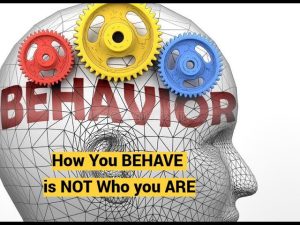Covert Borderline, Classic Borderline – Psychopaths?
1. Introduction to Mental Health Crisis and New Diagnosis Proposal
- The speaker introduced the global mental health crisis, emphasizing rising mental health disorders especially in the US and UK, with a focus on the need for new diagnoses such as “Covert Borderline” akin to existing concepts like covert narcissism. [00:00]
2. Reasons Behind Self-Trashing Behavior
- Three reasons for self-destructive behavior were outlined: a) life perceived as meaningless, b) overwhelming emotions in those who find life meaningful, c) individuals transitioning from meaninglessness to meaningfulness, seeking to feel alive often through self-harm and self-trashing behaviors. [07:10]
3. Overview of Borderline Personality Disorder (BPD) Types
- Description of shy/quiet borderline (internalizing behaviors) vs classic borderline (externalizing behaviors), with covert borderline introduced as a distinct type that acts out differently yet affects others. Discussion about gender biases affecting diagnosis—covert borderline more often male, classic borderline more female. [16:40]
4. Differentiating Narcissist, Psychopath, and Borderline
- Stability as key discriminator: narcissists have one stable area amidst chaos, psychopaths have chaos in all areas, borderlines fluctuate between these states, combining traits of both. [19:20]
5. DSM-5 Alternate Model for Borderline Personality Disorder
- The speaker reviewed the more nuanced DSM-5 alternative model, highlighting instability in self-image, goals, relationships, and affect, with diagnostic criteria including identity impairment, self-direction instability, compromised empathy, intense unstable relationships, impulsivity, risk-taking, and hostility. [22:30]
6. Diagnostic Criteria and Symptomatology of BPD
- Detailed symptoms such as emotional lability, anxiousness, separation insecurity, feelings of emptiness, impulsivity, risk-taking, and hostile behavior were discussed following DSM-5 criteria with emphasis on complexity beyond prior DSM iterations. [25:00]
7. Classic Borderline vs Covert Borderline: Comparative Table
- Identity and self-concepts differ: classic borderline shows identity diffusion and self-doubt, covert borderline has a stable but grandiose false self.
- Defense mechanisms: classic borderline internalizes blame; covert borderline externalizes blame, shows grandiosity, control, and emotional rationalization.
- Emotional regulation and dysregulation patterns vary; covert borderline rationalizes emotions and displays primary psychopathic traits, while classic borderline dissociates and internalizes emotions. [30:00]
8. Emotional Processing Differences
- Classic borderline displays alexithymia and ambivalent, intensely fluctuating emotions with internal crises leading to self-harm.
- Covert borderline tends to have low boredom tolerance, externalizes emotions through rationalization, and engages in external aggression to regulate feelings. [45:00]
9. Dissociation in Borderlines
- Classic borderline dissociation includes derealization, depersonalization, and amnesia to cope with emotional overwhelm.
- Covert borderline dissociates mainly via selective attention, filtering information and confabulating narratives to protect self-integrity. [51:00]
10. Interpersonal Relationships and Attachment Styles
- Classic borderline exhibits immediate but shallow intimacy driven by fear of rejection and abandonment; paranoid and mistrusting of others.
- Covert borderline is suspicious and cynical, often passive-aggressive, with superficial numerous relationships but tends to genuinely bond with children more than spouses. [58:30]
11. Behavioral Patterns and Social Functioning
- Classic borderline is socially anxious, unstable, with impulsive, explosive behavior often disrespecting boundaries due to low frustration tolerance.
- Covert borderline is socially charming, goal-driven, able to channel impulses into socially acceptable but self-serving activities, often appearing charismatic but manipulative. [1:05:30]
12. Moral and Ethical Characteristics
- Classic borderline frequently shifts values, lies pathologically, and can have mild antisocial traits.
- Covert borderline exhibits idiosyncratic ethics, self-defined morality, often involved in activism or spiritual leadership roles to garner love and acceptance. [1:10:00]
13. Love, Sexuality, and Relationship Instability
- Both types show impaired ability to maintain stable romantic relationships, high promiscuity, and inability to accept sexual boundaries, engaging occasionally in unconventional sexual behaviors.
- Differing motives: classic borderline seeks closeness through impulsivity; covert borderline pursues control and external validation. [1:15:00]
14. Cognitive Style and Thought Patterns
- Both demonstrate dichotomous (black-and-white) thinking and splitting, rapid attitude shifts, and magical thinking leading to distorted reality perceptions.
- Covert borderline is more knowledgeable and decisive, uses language articulately, while the classic borderline has difficulty learning and frequently rewrites reality to protect self-esteem. [1:20:30]
15. Summary and Future Directions
- The speaker concluded with a brief overview acknowledging that the covert borderline diagnosis complements existing understanding of personality disorders and will be explored further in future, shorter videos for clarity. [1:28:00]
This detailed summary groups the extensive discussion into relevant topics along with precise timestamps from the transcript for cross-reference.






